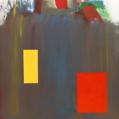gesang reviewed The Logic in Philosophy of Science by Hans Halvorson
Worth a read for its perspective taken
4 stars
It needs to be said that the book is written in an unnecessarily elaborate manner that complicates the process of comprehension. Summarizing, it merely saids that the meaning of "equivalence" between two theories A and B should be that A and B have "equivalent" models, that is, they have "equivalent" theories, or that their syntactic categories are Morita equivalent. The tools utilized were set theory and first order logic that logicians and philosophers more or less have some familiarity, so in order to define Morita equivalence between theories a whole two hundred of pages are used to develop the theory, along with some rather ugly definitions. I estimate that if a fully category-theoretic language is utilized 20-40 pages would be enough.
For someone who knows what Morita equivalence is in this sense what is important is the last chapter. Halvorson's point is, roughly speaking, pragmatic in the sense of American …
It needs to be said that the book is written in an unnecessarily elaborate manner that complicates the process of comprehension. Summarizing, it merely saids that the meaning of "equivalence" between two theories A and B should be that A and B have "equivalent" models, that is, they have "equivalent" theories, or that their syntactic categories are Morita equivalent. The tools utilized were set theory and first order logic that logicians and philosophers more or less have some familiarity, so in order to define Morita equivalence between theories a whole two hundred of pages are used to develop the theory, along with some rather ugly definitions. I estimate that if a fully category-theoretic language is utilized 20-40 pages would be enough.
For someone who knows what Morita equivalence is in this sense what is important is the last chapter. Halvorson's point is, roughly speaking, pragmatic in the sense of American pragmatism and moderate anti-realist, saying that the opposition between realists and anti-realists is merely that of difference between the criteria for two theories to be equivalent. Some need stronger one, while others need weaker, depending on what's one's purpose and what's in the range of one's accpeptance. Morita equivalence is the middle point that is neither too conservative in the sense of metaphysical realist, nor too liberal in the sense of extreme anti-realist. However it doesn't really make sense since Morita equivalence is really just an equivalence between 2-categories, and the categories that are chosen are nearly arbitrary. For instance, here Halvorson simply used classical first-order language, from which the theories built would definitely have syntactic categories that are different from those built from intuitionistic first-order language. The controversy between realists and anti-realists after 90s is about what language (e.g. classical or intuitionistic or even linear) science should utilize, or what mathematics (classical or intuitionistic, a mathematics with God-given real numbers or with reals continuously being constructed) science should choose, not on in what sense a scientific theory is equivalent to another.
While it is evident that anyone with some passing knowledge of Curry-Howard-Lambek correspondence and philosophy of science, together with some knowledge of 2-category, should have had a similar idea for sorting out the relations between language-theory, it is Halvorson et al. who have done the actual work and pointed out a good direction. It is possible that various string dualities and even quantum mechanics, when viewed from the point of quantization or asymptotic Bohrification, is a consequence of realizing that the classical theories are logically redundant (have "gauge symmetry") in their description and their language, that is, "laws of Nature" that one discovers when probing the so-called Nature are in essence that of logic - put it in a catchword, the mind, or the unconsciouss, "knows" quantum mechanics, while the consciousness doesn't, and the consciousness creates the Nature in its unfolding in the second cosmogony of universe.

